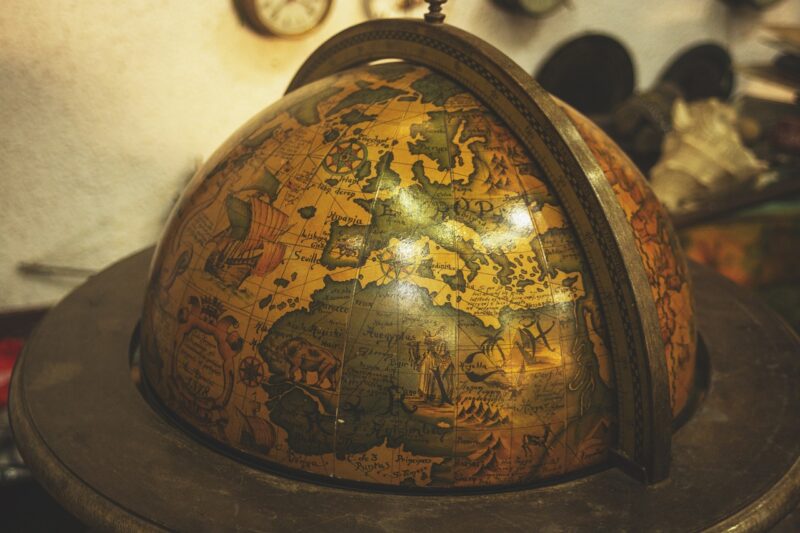Why the Invention of Glass Changed Ancient Science and Art
November 15, 2024

The invention of glass marked a pivotal moment in human history, embodying a convergence of science, art, and technology that shaped civilizations across the globe. From mere silica and soda to shimmering masterpieces, the transformation of glass had far-reaching implications that changed how we understand the physical world, aesthetics, and craftsmanship.
1. The Origins of Glass: A Historical Perspective
The development of glass can be traced back thousands of years, with origins that may have sprouted around 3500 BC in Mesopotamia and Egypt. Early glass was primarily used for beads and small artifacts. The initial fascination with glass was predominantly due to its striking visual qualities and its potential in ornamental arts.
Yet, the true potential of glass remained largely unexplored until the advent of advanced techniques in glassmaking during the Roman Empire. Innovations such as glassblowing significantly enhanced the versatility of glass, allowing artisans to create a broader array of items, including vessels, windows, and intricate art pieces. This newfound accessibility of glass started to impact daily life and cultural expression deeply.
2. The Role of Glass in Ancient Science
In the realm of ancient science, glass was paramount to several key developments. One of the most significant contributions of glass to science was its use in optics. With the discovery of the ability to shape glass into various forms—such as lenses—scientists began to explore light and vision more thoroughly.
The following outlines some important scientific applications of glass in ancient times:
- Lenses and Magnification: The creation of glass lenses allowed for the enhancement of vision and the study of objects too small or complicated to see with the naked eye. This laid the groundwork for future advancements in telescopes and microscopes, paving the way for significant discoveries in astronomy and biology.
- Chemical Applications: Glass was a vital component in alchemical experiments. The durability and non-reactive nature of glass made it suitable for holding and heating chemicals, leading to the unearthing of new substances and reactions. Ancient chemists, or alchemists, used glass vessels to concoct elixirs, which inspired modern chemistry practices.
- Measurement Instruments: Glass was used to craft early measurement tools, including thermometers and barometers. These devices empowered scientists to record and make sense of climatic patterns, leading to advancements in meteorology as well as understanding environmental changes.
The exploration of these scientific tools marked the beginning of a significant transformation in human knowledge, facilitated by a material as humble as glass.
3. Glass and Art: A New Paradigm
As glass technology evolved, so too did the artistic expression empowered by this medium. The relationship between glass and art is profound, capturing the imagination of artisans and influencing aesthetic traditions for centuries.
The following points highlight the enduring impact of glass on ancient artistic cultures:
- Vitrification of Colors: One of the striking features of glass is its ability to hold vibrant colors. Ancient artists experimented with the inclusion of metal oxides to create richly colored glass, enabling the development of unique mosaics and stained glass, which were often used in religious and ceremonial settings.
- Architectural Innovations: The introduction of glass windows in architecture transformed how light interacted with spaces. This not only improved the aesthetic appeal of buildings but also altered environments, affecting mood and spirituality in sacred spaces like cathedrals and temples.
- Sculptural Possibilities: The malleability of glass, especially when heated, granted artists the ability to create intricate sculptures and vessels that reflect complexity and creativity. Glass art forms developed distinctly across civilizations, from Venetian glass to Murano glass, each representing local culture and mastery of craft.
The evolution of glass artistry not only stimulated cultural expression but created trade systems that connected disparate regions in a shared appreciation of beauty and craftsmanship.
4. The Scientific Revolution and the Age of Enlightenment
The invention of glass and its applications significantly influenced the Scientific Revolution and the subsequent Age of Enlightenment. As scholars began to challenge dogma and promote empirical methods, glass carried this revolutionary spirit, permitting experiments and promoting new ways of thinking.
Key implications include:
- Experimental Science: Laboratories utilized glass apparatuses such as flasks, beakers, and tubes to conduct controlled experiments, where precision was critical to advancement. This culture of experimentation transformed knowledge production from philosophical discourse to hands-on scientific inquiry.
- The Development of Telescopes and Microscopes: The refinement of lens-making allowed scientists such as Galileo and Hooke to observe astronomical bodies and microscopic life forms, which enhanced our understanding of the universe and led to profound discoveries in both the large and small realms of nature.
- Broad Public Engagement: The production of glass instruments democratized science, making knowledge more accessible. Societal opportunities to engage with theory and experimentation fostered an inquisitive culture that propelled humanity into the modern age.
The impact of glass on science infiltrated all aspects of life, creating a spirit of curiosity that ultimately forced society to reassess its relationship with nature.
5. Conclusion: Glass as a Catalyst for Change
In conclusion, the invention of glass did far more than introduce a beautiful and utilitarian material into ancient societies; it ushered in unprecedented changes in both science and art. Glass allowed for advancements in the field of optics, transformed artistic expression, and played a key role in the cultivation of modern scientific practices. The legacy of glass continues to resonate in our daily lives today—accessible in everything from technology to art, reflecting the profound influence of this remarkable invention from antiquity.
As we forge ahead, the lessons from the past remind us of the powerful interplay between materials and human innovation. Just as ancient artisans and scientists harnessed glass to expand their horizons, we too can seek new frontiers in our contemporary understanding of science and art.








